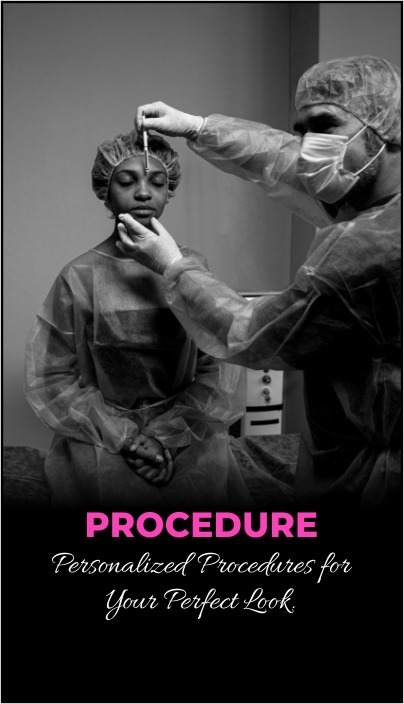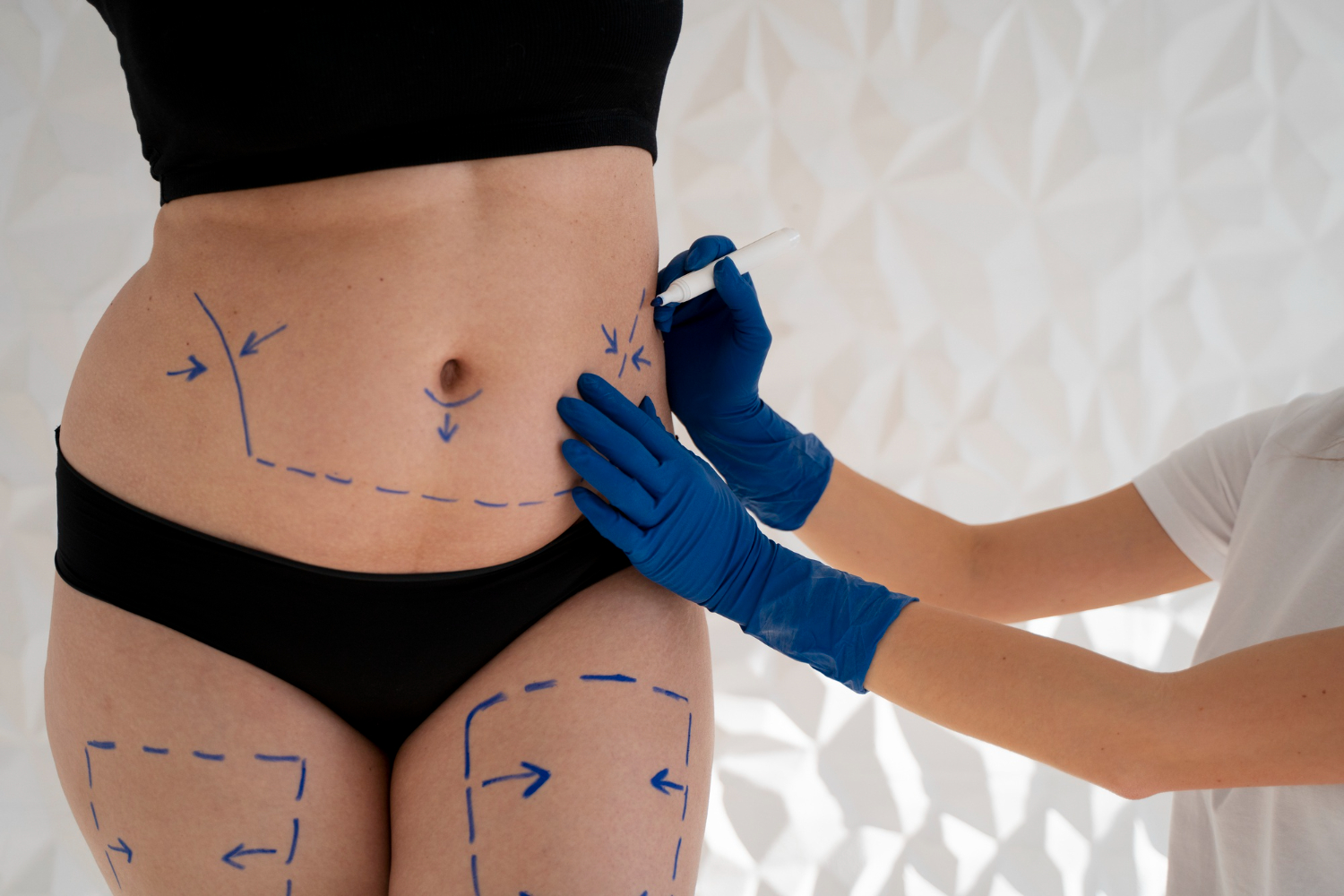

A body lift improves the shape and tone of the underlying tissue that supports skin and fat. Excess sagging skin and fat are removed, and the procedure(s) can improve a dimpled, irregular skin surface.
A body lift may include these areas:
Aging, sun damage, pregnancy, significant fluctuations in weight, and genetic factors may contribute to poor tissue elasticity that can result in sagging of the abdomen, buttocks, and thighs.

Body lifts are not intended strictly for the removal of excess fat. Liposuction alone can remove excess fat deposits where skin has good elasticity and is able to naturally conform to new body contours. In cases where skin elasticity is poor, body lift techniques along with liposuction may be recommended.
The average cost of lower body lift surgery is Rs________, according to the latest statistics from the International Society of Aesthetic Plastic Surgery (ISAPS). This average cost is only part of the total price – it does not include anesthesia, operating room facilities, or other related expenses. Please consult with your plastic surgeon's office to determine your final fee.
A surgeon's cost will be based on his or her experience, the type of procedure(s) used, and the geographic office location. Most health insurance does not cover body lift surgery or its complications, but many plastic surgeons offer patient financing plans, so be sure to ask.
Body lift costs may include:
During your body lift surgery consultation, be prepared to discuss:
Your plastic surgeon will also:
The success and safety of your body lift procedure depend on your complete candidness during your consultation. Be sure to ask questions. To help, we have prepared a checklist of questions to ask your body lift surgeon that you can take with you to your consultation.
It's very important to understand all aspects of your body lift procedure. It's natural to feel some anxiety, whether it's excitement for your anticipated new look or a bit of preoperative stress. Don't be shy about discussing these feelings with your plastic surgeon.
The decision to have plastic surgery is extremely personal. You will have to decide if the benefits will achieve your goals and if the risks and potential complications of body lift surgery are acceptable.
Your plastic surgeon and/or staff will explain in detail the risks associated with surgery. You will be asked to sign consent forms to ensure that you fully understand the procedure you will undergo and any risks or potential complications.
Possible body lift surgery risks include:
These risks and others will be fully discussed prior to your consent. It is important that you address all your questions directly with your plastic surgeon.
In preparing for body lift surgery, you may be asked to:
If your body lift is performed on an outpatient basis, be sure to arrange for someone to drive you to and from surgery, and to stay with you for at least the first night following surgery.
Body lift procedures are surgical procedures and they require extensive incisions. Incision length and pattern depend on the amount and location of excess skin to be removed, as well as surgical judgment. Advanced techniques usually allow incisions to be placed in strategic locations where they can be hidden by most types of clothing and swimsuits.
Step 1 – Anesthesia: Medications are administered for your comfort during the surgical procedure. The choices include intravenous sedation and general anesthesia. Your doctor will recommend the best choice for you.
Step 2 – The incision: One common technique of complete lower body lift uses incisions similar to a bikini pattern to tighten the abdomen, groin, waist, thigh, and buttock in one procedure. An incision around the body removes an apron of excess skin and fat and repositions and tightens tissues.
Surgical body lifts may require liposuction to achieve an improved contour.
Step 3 – Closing the incisions: Deep sutures within underlying tissues help to form and support the newly shaped contours. Sutures, skin adhesives, tapes, or clips may be used to close the skin incisions.
Step 4 – See the results: The results of a body lift are visible almost immediately. It may take as long as one to two years for the final results to fully develop.
During your body lift surgery recovery, dressings or bandages will be applied to the incisions after the procedure is complete. Small, thin tubes may be temporarily placed under the skin to drain any excess blood that may collect.
You will be given specific instructions that may include:
Be sure to ask your body lift surgeon specific questions about what you can expect during your individual recovery period:
If you experience shortness of breath, chest pains, or unusual heartbeats, seek medical attention immediately. Should any of these complications occur, you may require hospitalization and additional treatment.
The results of body lift surgery are visible almost immediately. However, it may take two years or more for the final results of the body lift procedures to fully develop.
Some visible scars will remain, but the overall results are long-lasting, provided that you maintain a stable weight and general fitness. As your body ages, it is natural to lose some firmness. However, most of your initial improvement should remain.
Although good results are expected from your body lift surgery, there is no guarantee. In some situations, it may not be possible to achieve optimal results with a single surgical procedure, and another surgery may be necessary.
Following your physician's instructions is essential to the success of your surgery. It is important that the surgical incisions are not subjected to excessive force, motion, swelling, or abrasion during the time of healing. Your doctor will give you specific instructions on how to care for yourself.
A body lift involves many choices. The first and most important is selecting a board-certified plastic surgeon who is a member of the International Society of Aesthetic Plastic Surgery (ISAPS).
ISAPS Member Surgeons meet rigorous standards:
